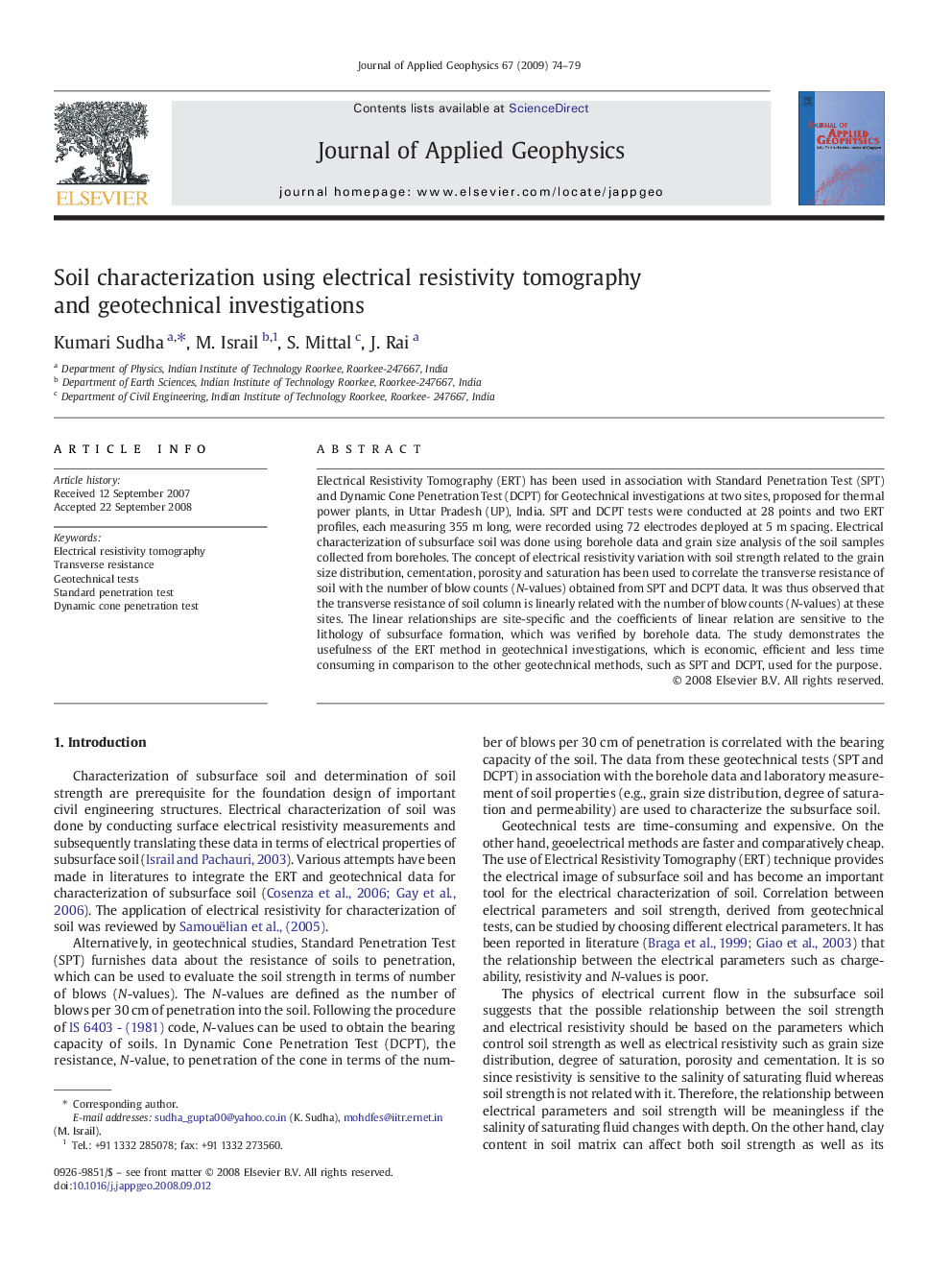| Article ID | Journal | Published Year | Pages | File Type |
|---|---|---|---|---|
| 4740953 | Journal of Applied Geophysics | 2009 | 6 Pages |
Electrical Resistivity Tomography (ERT) has been used in association with Standard Penetration Test (SPT) and Dynamic Cone Penetration Test (DCPT) for Geotechnical investigations at two sites, proposed for thermal power plants, in Uttar Pradesh (UP), India. SPT and DCPT tests were conducted at 28 points and two ERT profiles, each measuring 355 m long, were recorded using 72 electrodes deployed at 5 m spacing. Electrical characterization of subsurface soil was done using borehole data and grain size analysis of the soil samples collected from boreholes. The concept of electrical resistivity variation with soil strength related to the grain size distribution, cementation, porosity and saturation has been used to correlate the transverse resistance of soil with the number of blow counts (N-values) obtained from SPT and DCPT data. It was thus observed that the transverse resistance of soil column is linearly related with the number of blow counts (N-values) at these sites. The linear relationships are site-specific and the coefficients of linear relation are sensitive to the lithology of subsurface formation, which was verified by borehole data. The study demonstrates the usefulness of the ERT method in geotechnical investigations, which is economic, efficient and less time consuming in comparison to the other geotechnical methods, such as SPT and DCPT, used for the purpose.
